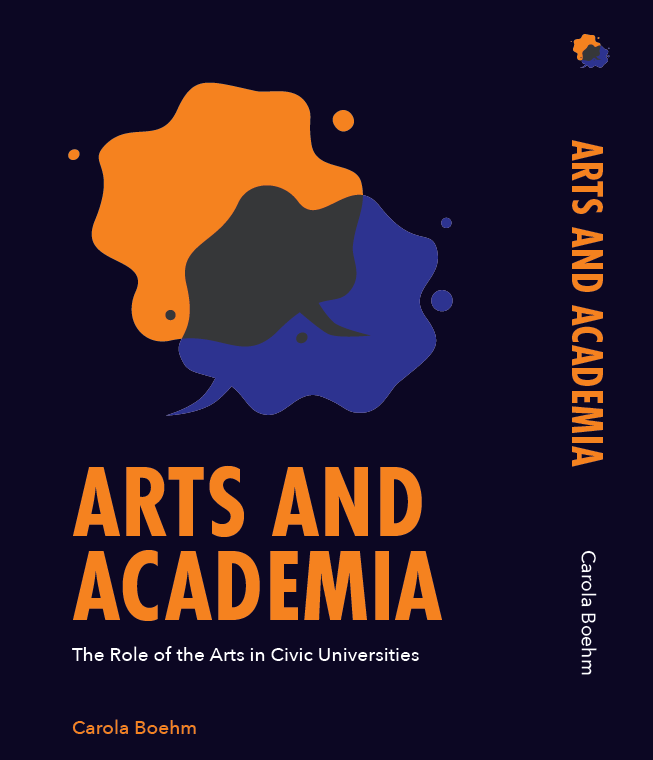This is a curation written by Carola Boehm, Professor of Arts and Higher Education at Staffordshire University. She is the co-lead of the C3 Centre for Creative Industries and Creative Communities, and is co-chair of Stoke Creates, the regional Cultural Compact. She has led large-scale Europen-wide research projects and in this curation writes about her area of research: Culture 3.0:
I seem to be increasingly known as the person that researches Culture 3.0. It has become a buzzword, but I did not coin this concept.
So in this curated exploration of my current area of research, I would like to explore how I got here and provide links to short explainers to the concept as I go along. Although my most well known work is still in the area of music technology, I currently research more often in and around the thematic field of cultural policy, making use of conceptual frameworks that allow us to understand more impactful ways of making all of our lives more creative.
For my work, I heavily rely on a cultural giant; I use the critical frameworks of Luigi Sacco, who developed the Culture 3.0 concept.
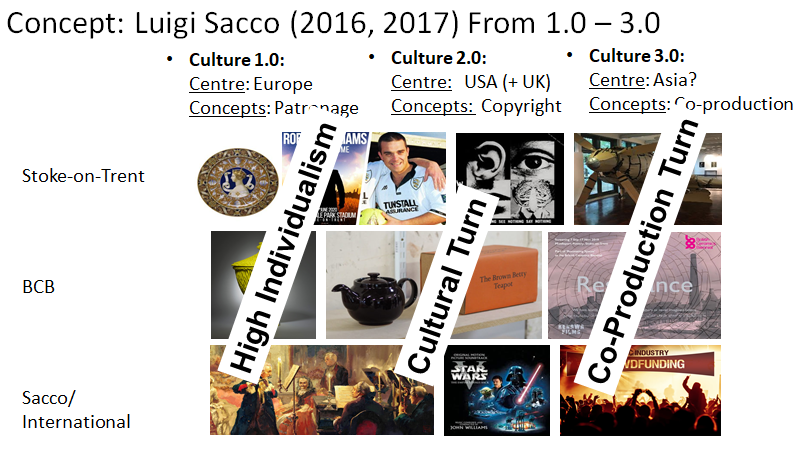
This concept, which I originally encountered through a talk Sacco gave back in 2010, made immediate sense to me. I could see the power of this concept for shifting our understanding of how we culturally engage and what the implications of this are for public, cultural policy.
Back in 2012, in order to explore this in my own academic practice contexts, I organised a first public discussion panel that would specifically explore the relevance of this Culture 3.0 concept to a university-housed Arts Council co-funded Arts Centre.
I was Head of Contemporary Arts at MMU’s Cheshire Campus at the time, also chairing the departmental-based, ACE-co-funded Axis Arts Centre. The Department and its ca 40 members of staff engaged in learning, teaching and research across the disciplines of Dance, Drama, Theatre, Music, Creative Writing, and socially engaged Community Practices. The Axis Arts Centre provided a publicly funded programme of performance work in South Cheshire.
The centenary celebrations of MMU Cheshire in June 2012 allowed my Department of Contemporary Arts the opportunity to engage in public discussions on a variety of issues relating to the contemporary arts, including how we ensure that the Axis Arts Centre continues to grow its impact for our learners, for our staff as well as our surrounding public at large.
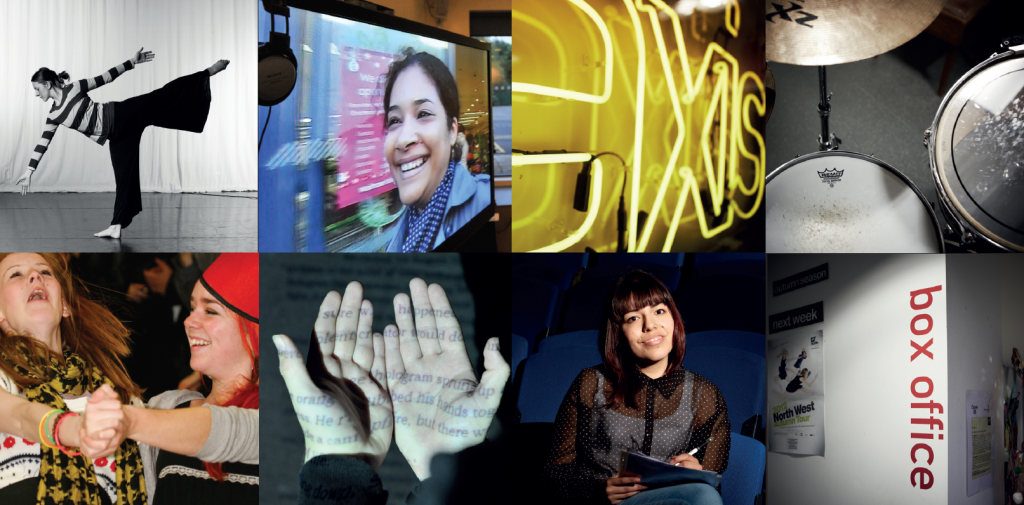
So debating issues around policy and strategy with key academics that were researching, and that were in practice, engaged in the running and curation of arts practices as part of the centre, was important for us as an academic community.
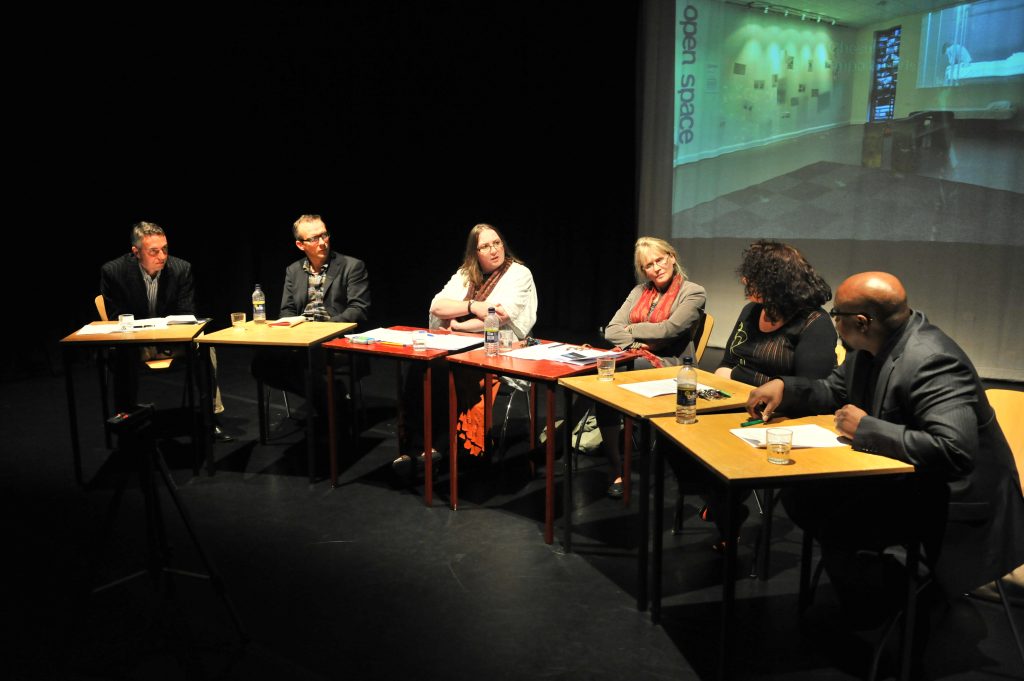
The idea of this discussion panel was to explore how small-scale arts centres can become more impactful, enagage more communities, and become more diverse. We actually “toured” this panel discussion all the way from Austria, where we were part of a conference on the impact of art centres, to Scotland, as part of 2014’s annual ELIA conference (European League of Institutes of Arts). A written up script of one of these three panel discussions can be found here:
BOEHM, Carola, Linden, J, Gibson, J, Carver, G, Clennon, O and Mackenzie, N (2014) Community, Identity and Locality: Sustainability & impact of university-housed, small-scale arts centres. A panel discussion. European League of Institutes of Arts (ELIA)Glasgow. https://eprints.staffs.ac.uk/3188/
The three panel discussions allowed us to carve some space for some deep thinking for applying as centre policy of our arts centre. In this process, the public panel discussion transcript represented the debates from its various perspectives, leading and simultaneously guiding us towards reconceptualising a more dynamic model on which to build the Centre’s sustainability, identity, and be able to maximise impact.
From these debates came various strategic decisions, the insights from these debates influenced institutional policy in regards to the Arts Centre’s future direction. Our Arts Centre Director, Jodie Gibson, expanded the offer to accommodate more touring work itself, incorporating community co-curated settings for work that came through the Axis Centre. Our Artistic Director, Neil MacKenzie, wrote in his own research about the process of artistic curation, itself, and our Practice-as-Research Curator, Jane Linden, published a PhD thesis on just this topic.
My own academic expression came in form of an academic article that attempted to lat the groundwork on my perspective of Culture 3.0 and its implications for cultural policy for arts organizations.
BOEHM, Carola (2016) Academia in Culture 3.0: a Crime story of Death and Rebirth (but also of Curation, Innovation and Sector Mash-ups). REPERTÓRIO: Teatro & Dança, 19 (27). pp. 37-48. ISSN 2175-8131 http://eprints.staffs.ac.uk/3185/
Our MMU Cheshire campus was sadly closed down in 2019, and the above article not only allowed an exploration of a line of enquiry around the questions on how we culturally engage, but also a documentation of how we worked in that era in that department and within this academic and creative community. A moment frozen in time, but one that undoubtedly influenced all that took part in those initial round-table debates.
Arriving at Staffordshire University, my work continued to explore what Culture 3.0 meant for the diversity conundrum. In the latter half of the 2010s, the arts communities were soul-searching on why most of our cultural provision attracted mostly white audiences. Reports were published scrutinising this conundrum, and books, such as “Culture is bad for you” (by Orian Brook, Dave O’Brien and Mark Taylor) laid the lack of diversity out in tables for all to see.
But most of these discourses did not sufficiently attend to an essential and basic aspect of what they were actually counting. The predominant definition of what art is worthy of being counted, of having tickets, of how marketable cultural engagements might distort the picture of cultural engagement, how marketed system of licenses, sales and IP allowed us not to see that this was a matter of definition of eligibility of data sets, rather than a matter of lack of diversity for cultural engagement.
So I gave a talk on just this issue.
Traveling to Finland and Denmark, as part of an International Leverhulme Fellowship, I explored the impact of art schools for our creative and cultural cities. Spending time there, I started to do what I called “Culture30 Walks”: walking to work I would count the number of cultural engagements I had just in a time span of 15 minutes, and document findings immediately on a twitter thread.
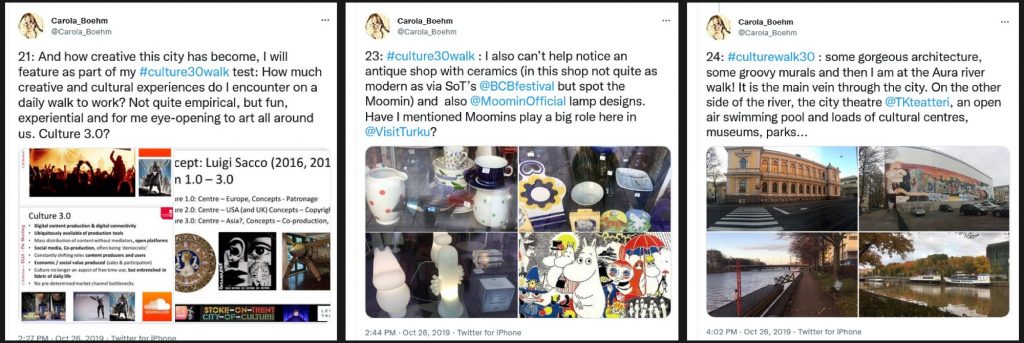
The twitter thread of 34 different tweets and more than 50 images documenting my #Culture30walk walks are still up on Twitter, and doing these walks in different cities allows me to have a quick snapshot of the everyday creativity that a city has been able to embed in its cityscape. Thus Culture 3.0 becomes a key instrument to make more impactful culture-led regeneration, or place-making and place shaping.
Click on the twitter image below to open up the whole Twitter Thread of the curated documentation of my Culture30 walk.
The work increasingly demonstrated its relevance to place-making related strategies and policies, and in 2019 we used the Culture 3.0 concepts to underpin our ACE-funded Placemaking and Co-Creation Leadership Programme, called Create Place. (https://blogs.staffs.ac.uk/createplace/)
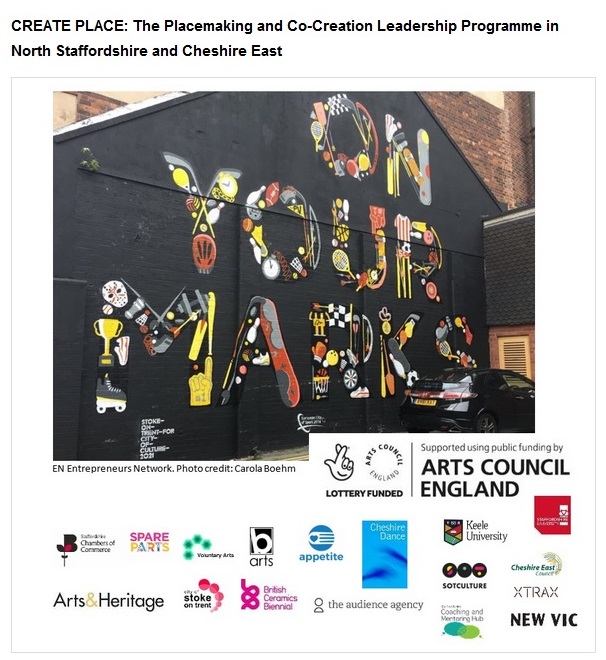
My research in and around Culture 2.0 is ongoing, but if one wants to end on a key milestone in my journey around exploring how Culture 3.0 concepts can impact agendas around diversity, inclusion, placemaking and co-creation, than a great place to look is my recently published book from 2022.
BOEHM, Carola (2022) Arts and Academia: The Role of the Arts in Civic Universities. Great Debates in Higher Education . Emerald Publishing Limited, Bingley. ISBN 978-1-83867-730-5 http://eprints.staffs.ac.uk/7301/
Particularly the third chapter is a great little explainer on all things Culture 3.0, and much of my thinking and work has found its way into the one or other chapter of this book.
It is freely available as a pdf from above website, albeit in its pre-copy-edited version.
Enjoy.
Carola Boehm, July 2023.
